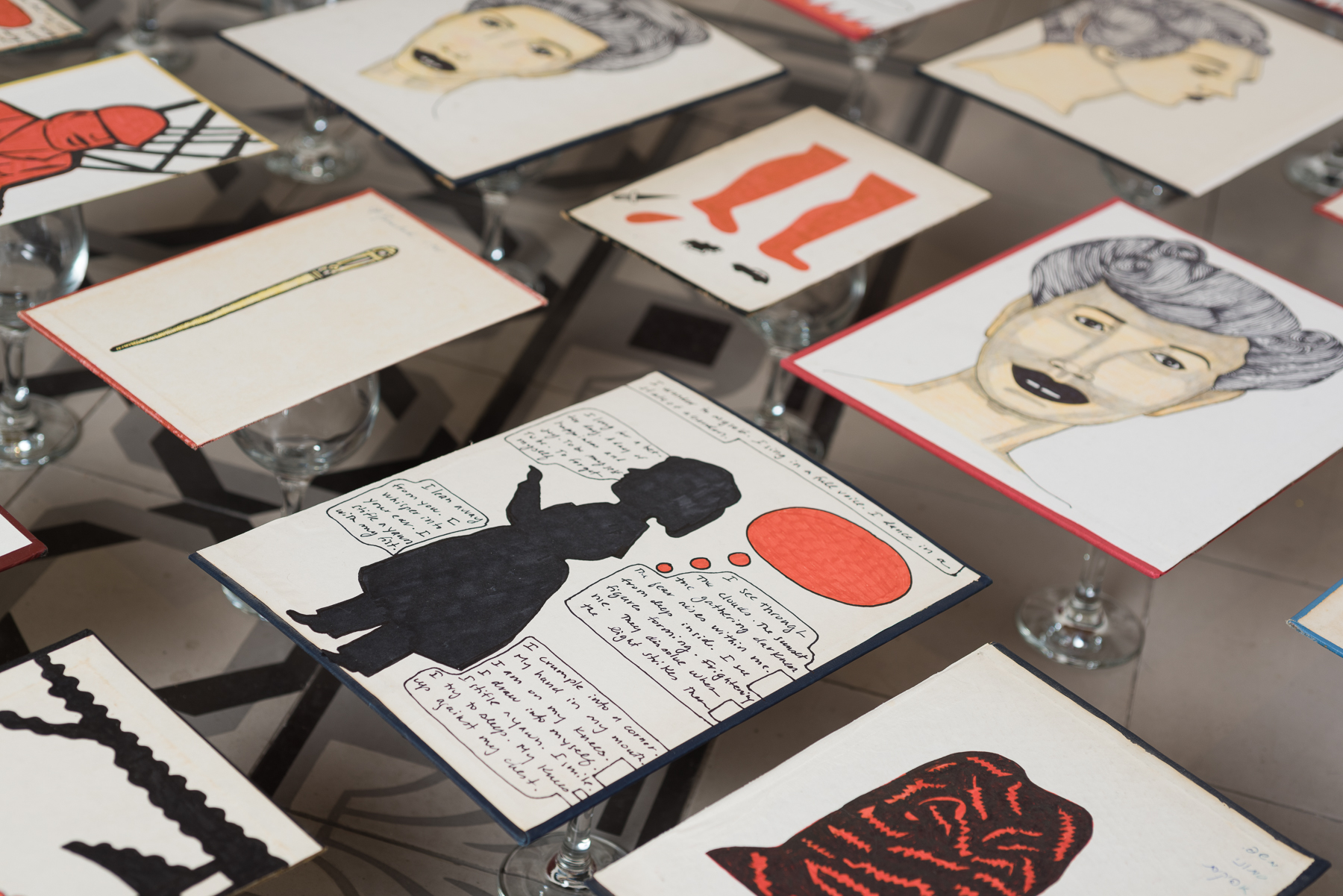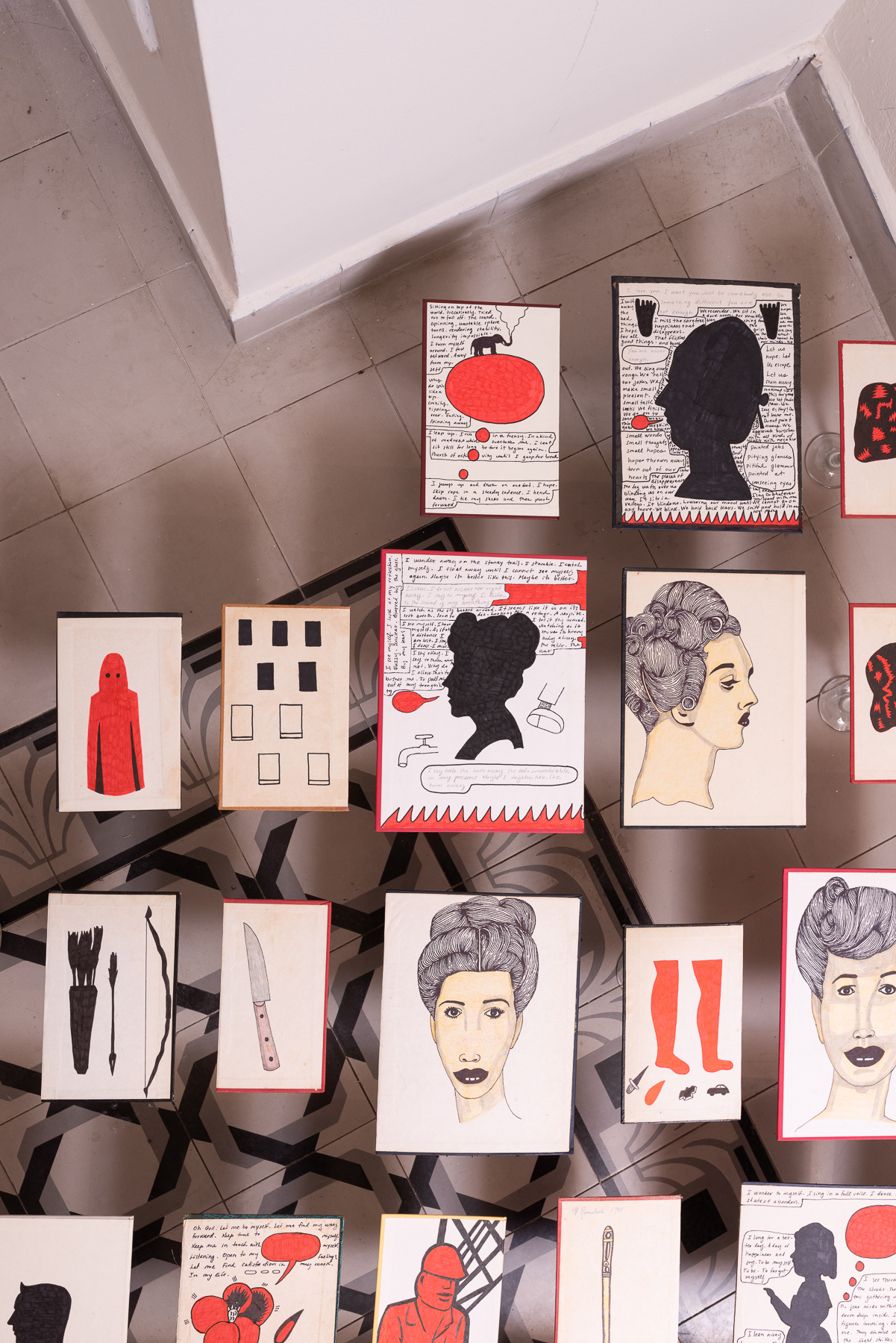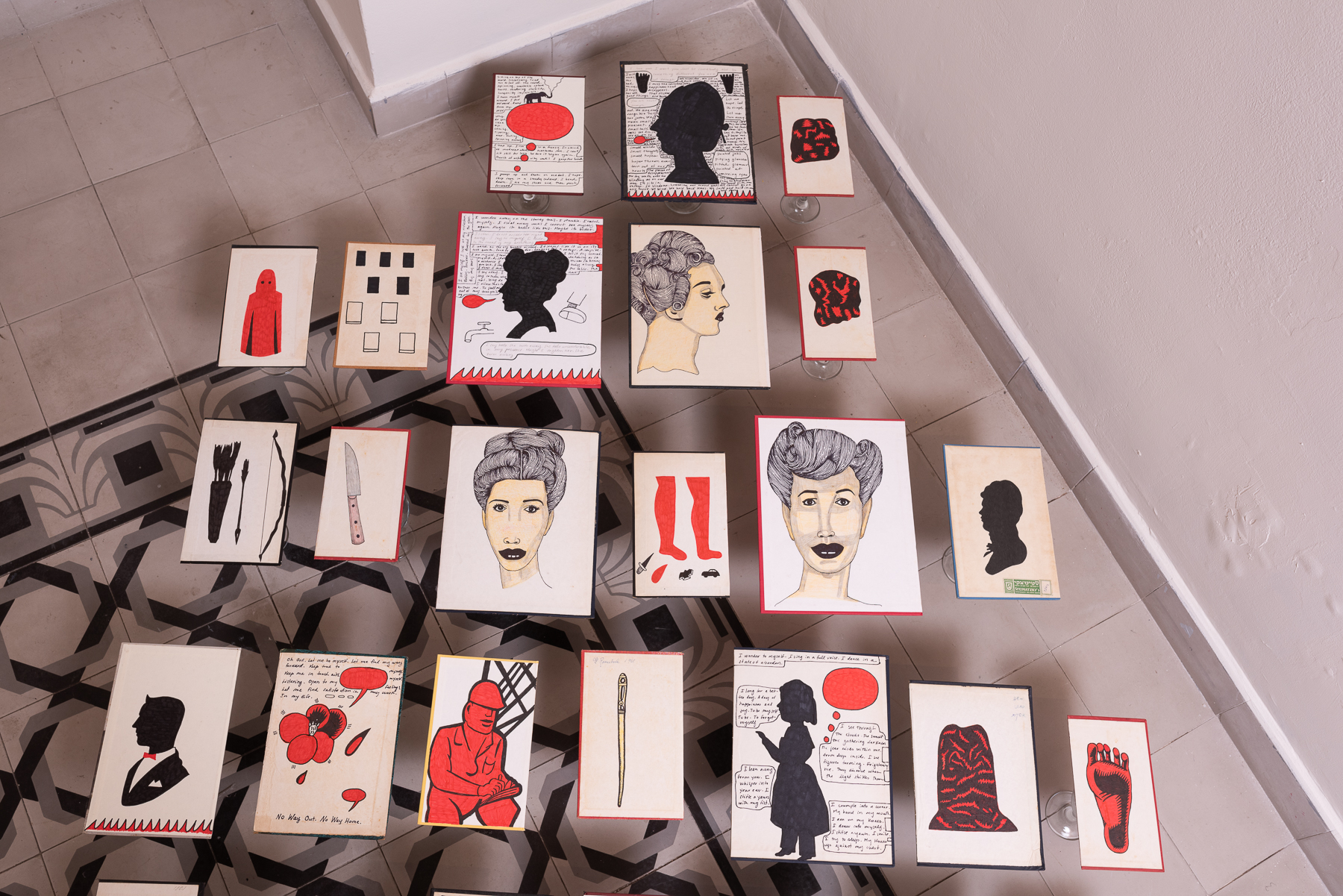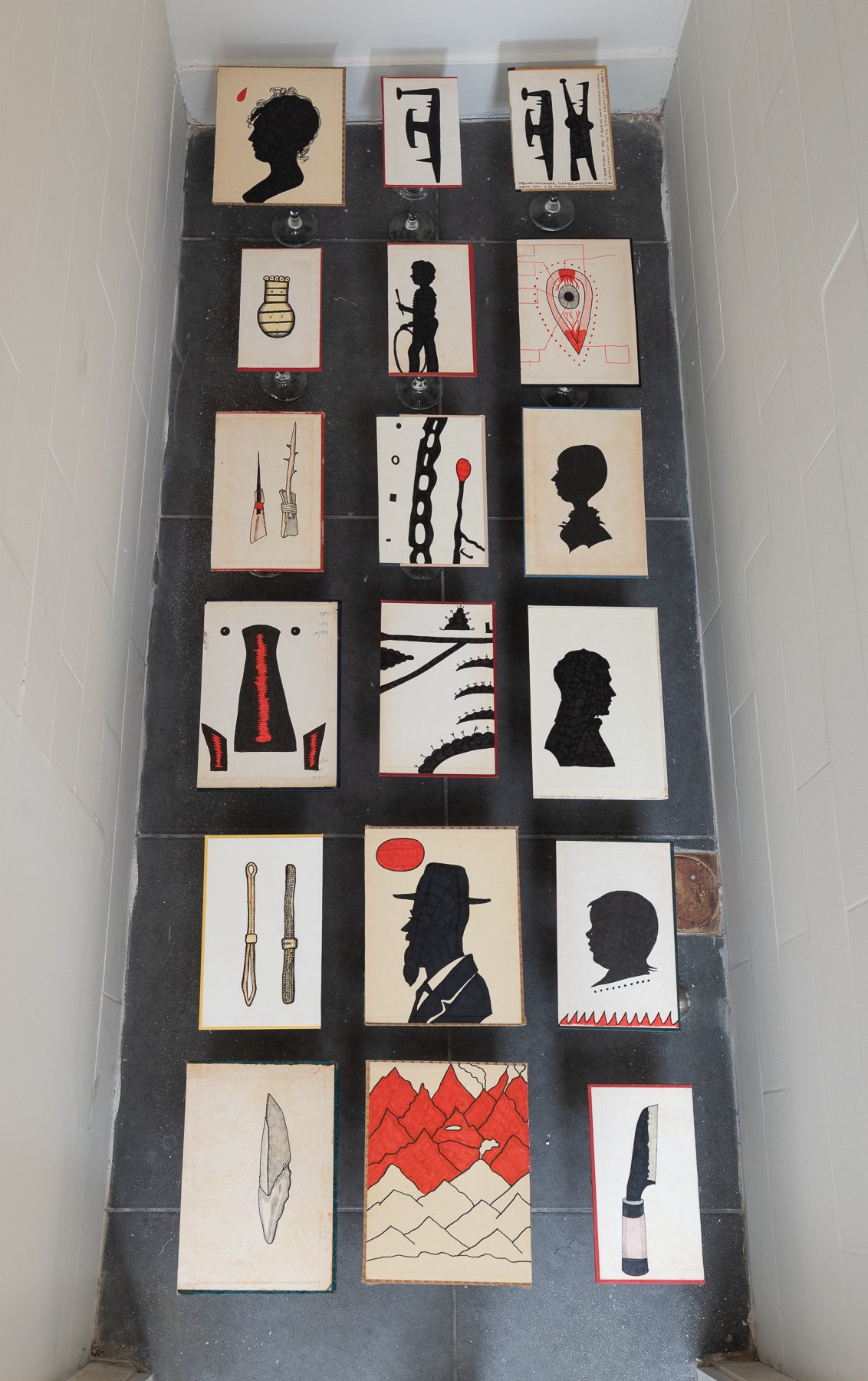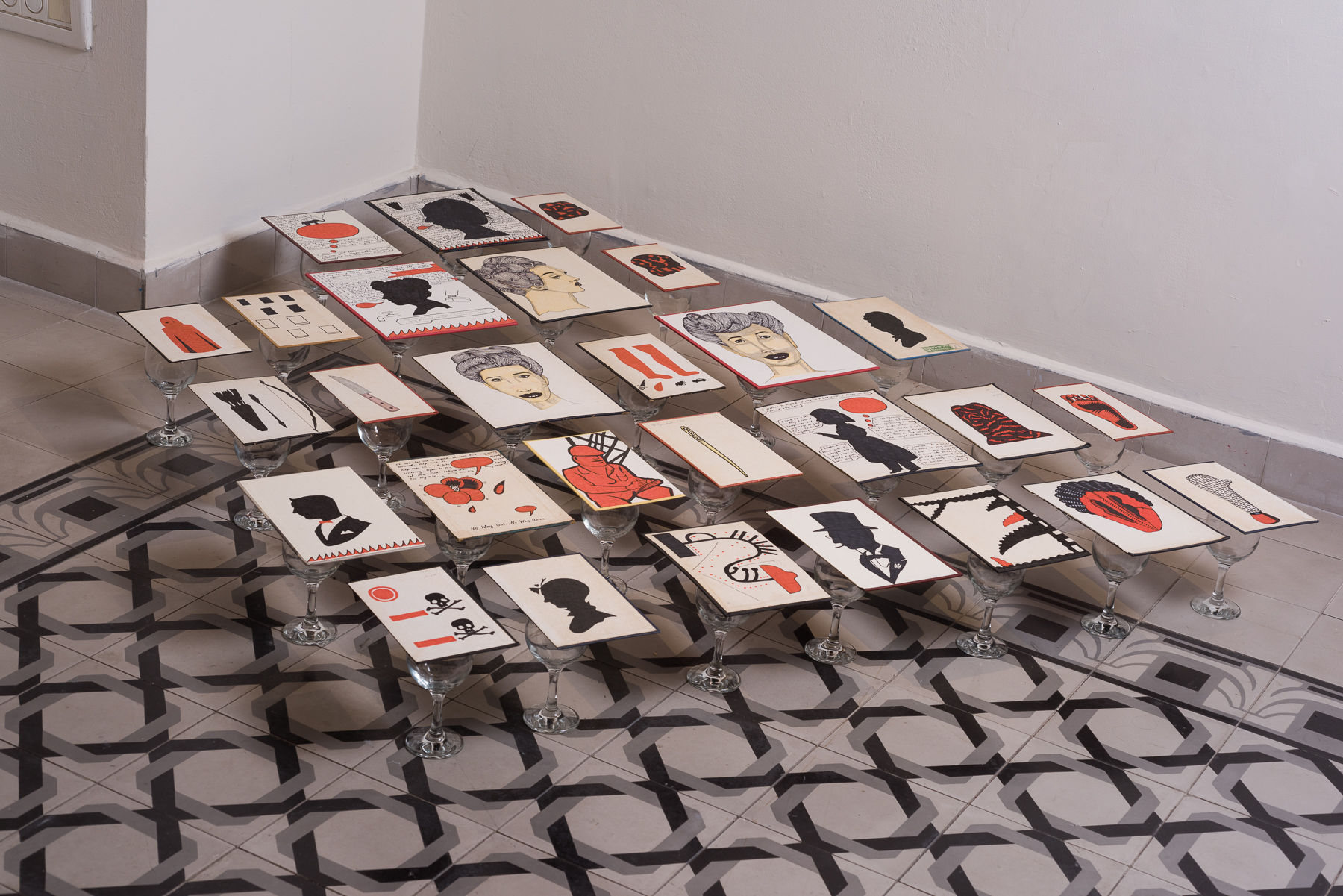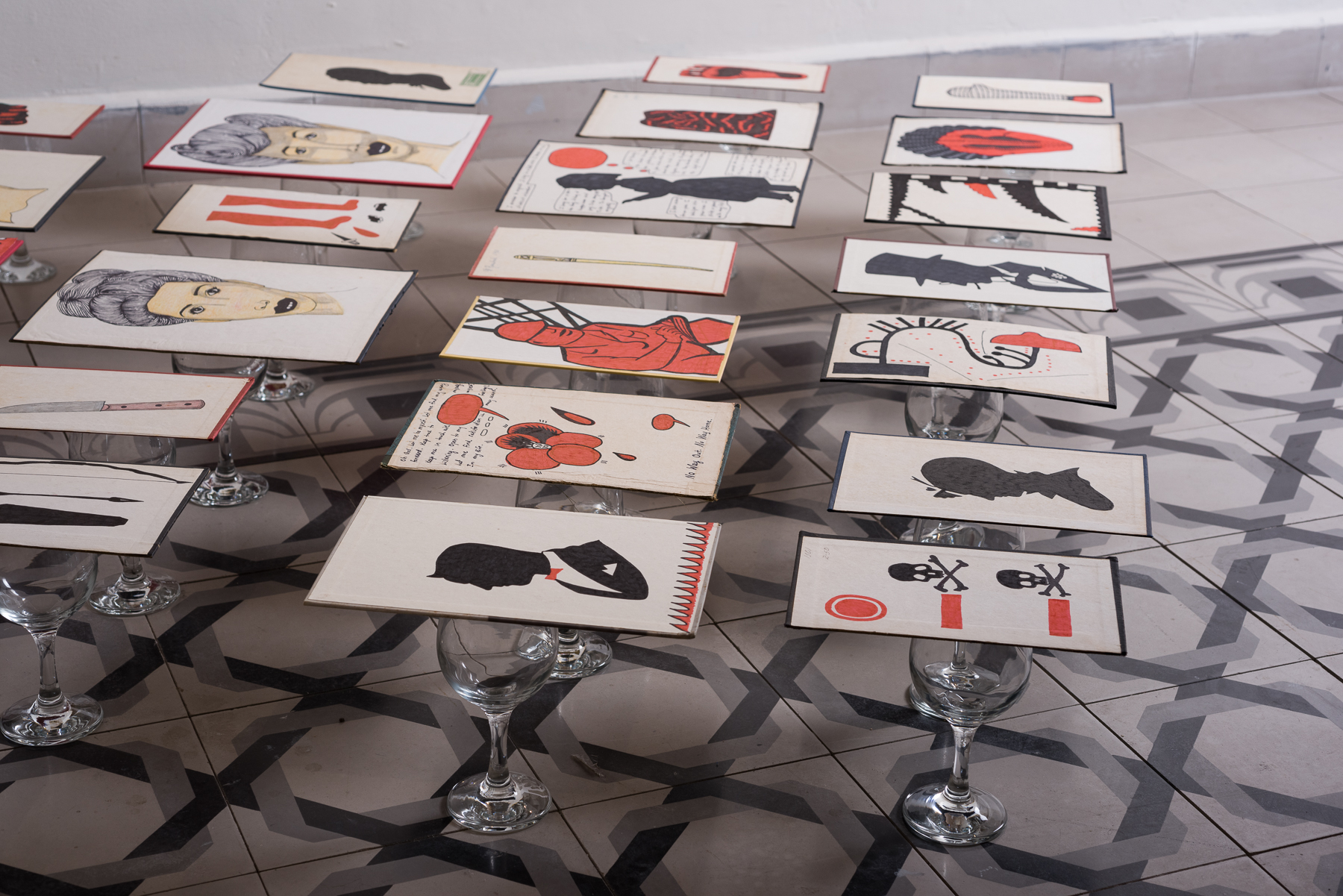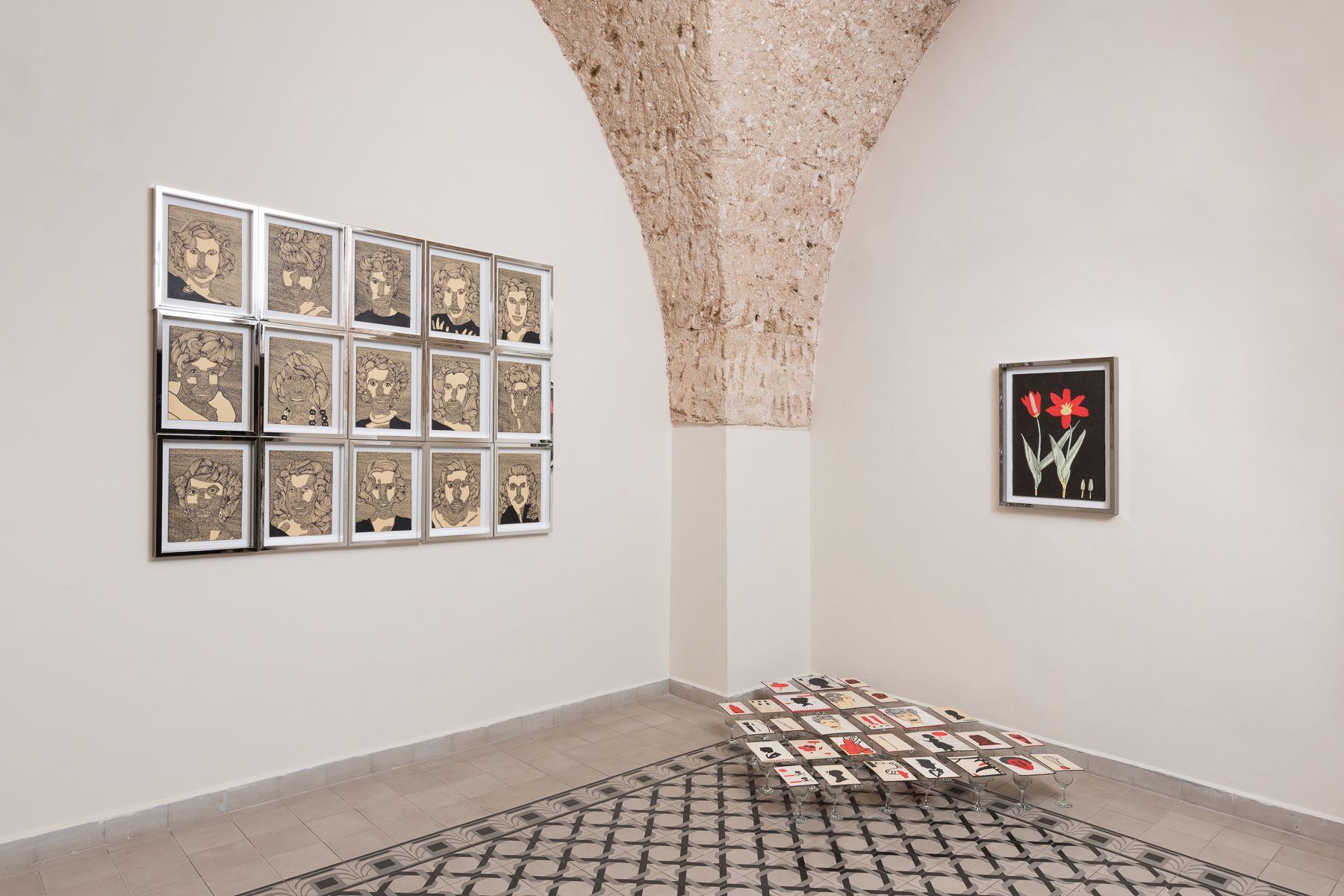
WELL BEING
21/2/2020 - 6/6/2020
Neve Schechter, Tel Aviv
Curator: Shira Friedman
Installation photographs: Youval Hai
In this exhibition, Gary Goldstein presents recent works created over the past three years, in which his biography plays an important role. The ensemble of works reveals that Goldstein’s visual and written language has taken on a somewhat freer quality; the remarkable density that sometimes characterized his works in the past has dissolved, and his series also include blank pages and abstract fields of color in the background.
A reading of the texts integrated into the paintings introduces us to a childhood filled with sorrow, in a family where both parents were Holocaust survivors reckoning with memories of impossible suffering and the ghosts of their loved ones. Goldstein writes especially about his father, and the process of reconciliation that he has come to experience in his regard, especially following the birth of his grandchildren. He notes his own manner of sitting while he paints – a pose that reminds him of his father, a tailor, bent over his work as he immersed himself in it. His father would take apart suits with the same concentration that Goldstein discovered in himself while disassembling books and taking apart their spines in preparation for his paintings.
Goldstein’s works continue to explore his concern with the written word and with books, while going beyond the genre of “automatic writing” and turning to narrative writing, which is concerned with memory and its validity in a personal, associative, confessional style: “The waves inundate and drown me, stifling the air, my breath. I am old. No longer a child. I am harrowed by the waste, given the pain of that time. Every time I remember – I cannot forget. I am gray. Made of lead.” In the sound work created by the artist Etty BenZaken, which is heard in the gallery space, Goldstein’s words acquire an abstract dimension, as fragments of words severed from their meaning.
Writing about the motif of faces, which recur throughout the exhibition, he notes: “I came to understand that my work conceals a forest of faces, a forest of portraits depicting people I had never met, and which I had seemingly never thought about; yet I had never stopped thinking about them. Their figures appear, change, and recur in painting after painting, year after year, in the pages of the old books on which I create my works.”
